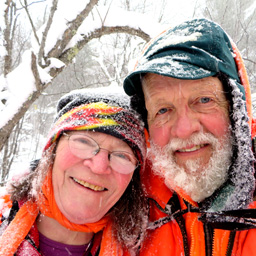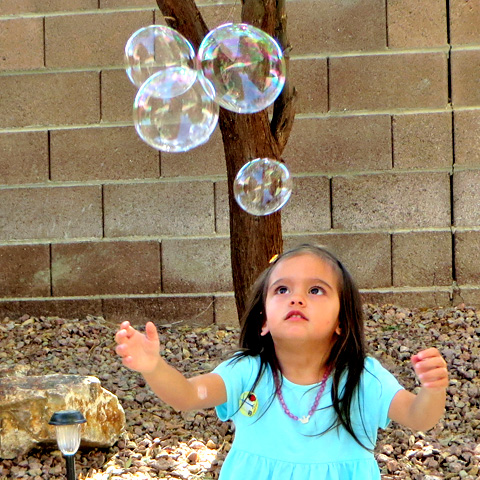
STARTED OUT: Born a long-forgotten time ago in the first half of the twentieth century in the southern Appalachian Mountains to missionary parents, James and Martha Belote (and thus of French, British, Scots-Irish, German and Austrian heritage, in addition to about 1/4000th or 1/2000th Powhatan heritage, depending upon, among other things, an uncertain first-cousin marriage [MBD=FZS, of course] a couple of hundred years ago).
RAISED: Mississippi and Alabama--various times in the forties and fifties; Wahiawa (at the time, Territory of Hawaii)--first half of the forties; Canton (Guangzhou) (in what was not then the People's Republic of China)--later forties (click here for a true story); Baguio, PI--briefly at the end of the forties; Hong Kong (when it was still a Brit Crown Colony)--end of the forties to the late-middle fifties.
EARLY EDUCATION: Studied under a variety of educational regimes starting with the Wahiawa Community Kindergarten and moving through others such as home schooling (Calvert), the Ling Nam School, Brent School, and West Tallahatchie High School, and finishing off with (or being finished off one year by) King George V School in Hong Kong (headmaster/principal "peg-leg" Potter, school tie, GCE, god-save-the-queen, field hockey, the world's worst high school basketball team, prefects and all).
LATER EDUCATION: Attended what is now known as Mars Hill University (then Mars Hill Junior College, and originally, in1856, called "French Broad Baptist Institute"!!) and North Carolina State University (then North Carolina State College) in the first two years of a sometimes not particularly illustrious academic career. Then survived another half-decade or more of a lot of trees, a few good trout streams, too much snow, and too many mountains, in the vicinity of the University of Montana (then Montana State University), where a B.A. in History was finally obtained.
STILL LATER EDUCATION: University of Illinois, Urbana-Champaign. Too many cornfields this time, and an awful lot of books in the library, and a great faculty. But none of this had anything to do with the record-setting pace which I set on my way to a Ph.D. in anthropology (18 years).
BLOOD, SWEAT AND MONEY: Hunted down and destroyed wild currant and gooseberry bushes (this activity was called "Blister Rust Control") and fought forest fires for what was then, but is no longer (not again!), the St. Joe National Forest in Idaho for three seasons in the late fifties; spent six fantastic months checking fire indexes, not ordering garlic and onions, kicking rocks out of trails so horses wouldn't stub their toes, riding side-saddle (I didn't grow up to be a cowboy) with a short string of mules behind me with supplies for trail camps and fire lookouts, repairing fallen ground-line telephone systems, running a rock drill, and clearing trails, as a headquarters guard on the entirely wilderness district of Big Prairie (yep ... the district no longer exists) in the Bob Marshall Wilderness of the Flathead National Forest in 1960 (click here for an account of that experience); and in the second year of the sixties survived the excitement of blazing forests and lots of money (well . . . ) in a short time by joining a "hotshot" firefighting crew working out of the Bitterroot National Forest.
SAVING THE WORLD: Later in the second year of the sixties (1961 ... it was about this time that someone at the University of Montana insisted that I pick a major, graduate, and get out of there) I applied to join the Peace Corps. In spite of the general shortage of snow in most of Southeast Asia, I had put that area down as my choice for where to go should I be accepted. I was accepted . . . for Ecuador, wherever that was. Checked out encyclopedias and atlases. South America, Andes mountains, snow on the equator, good enough. After three months training in Puerto Rico and a month in Ecuador, assignments were given out. I was to work with the Saraguros, a native people of south highland Ecuador, who lived far from the snowy peaks of central and northern Ecuador, and do "rural community development." Did some of that, learned a lot but didn't save the world, sometimes was "forced" to drink a little too much (click here for more about that), planted too many exotic trees, helped the Peace Corps decide that volunteers probably should not be provided with jeeps (click here to find out why), and fell in love with the place and its people. And with another Peace Corps volunteer who came down a few months later--Linda. And in less that a year we were married. And wondering how we would get back to Saraguro once our two years there were over. And that was the first time either of us ever considered the field of anthropology as having professional possibilities for us (Linda had graduated with a degree in German and a desire to do her Peace Corps stint in north Africa).
MORE SWEAT AND NOT MUCH MONEY BUT A RIVER RAN THROUGH PART OF IT: Returned to the University at Missoula, Montana, finished the degree in history (at last). Lived on chicken livers, rice, Duncan Hines cake-mixes-on-special (10 for a dollar), brown trout, venison and elk (and even had a coke once, but don't mention that extravagance to Linda). Worked on an engineering crew for the Lolo National Forest and calculated cut and fill without a calculator and didn't survey any bridges over the Blackfoot River. And our first child, David (who completed degrees at Columbia University and Montana State University and is now living in Bozeman, Montana, having worked for many years as a computer scientist for Bridger Systems), was born (in Missoula), and then we went to Pennsylvania where I worked as a fitter-welder.
In the sixth year of the sixth decade of the twentieth century we were admitted as graduate students in anthropology at what was then known (and still is!) as the University of Illinois. During our time as students there we were fortunate to spend only one summer in the cornfields (literally in my case) of Illinois. Anthropology was the right thing for us. We have been back Saraguro many times, now to do anthropological research.
Our second child, Karen (check her web page) was born in Saraguro during one of these field sessions. She completed her degree in Spanish at the University of Minnesota Twin Cities. For several years she worked at the Angel Fire Resort in guest services and as a snowboard instructor. Then she worked for David English House for a couple of years as an English teacher in several institutions in the Hiroshima area of Japan. We visited her there several times. Karen, now also known as "Nthabiseng" (in the SiSotho language), completed more than two years as a Peace Corps volunteer in Moteti, Mpumalanga, South Africa (where she was given her new name) and in early 2005 another job took her to California, Montana, Ecuador (where she met another ex-PCV who had also been named "Nthabiseng"), Chile, and Tanzania. After living several years in several locations in the Califoria Bay Area, she now resides in the Las Vegas area of Nevada (where she works in the school system), is married to Sven Stevens from Hawaii, and is the mother of our wonderful grandchild, Grace.

A LITTLE LESS SWEAT (EXCEPT FOR A COUPLE OF SUMMERS IN THE EARLY NINETIES WHEN I DID ARCHAEOLOGICAL WORK FOR WHAT WAS THEN KNOWN AS THE MEDICINE BOW NATIONAL FOREST) AND (USUALLY) A LITTLE MORE MONEY: Students have been subjected to whatever it is I subject students to (in addition to weird tests) at Grove City College (2 academic years), Michigan Technological University (15 years), Finlandia University (then Suomi College) (1 year), the University of Minnesota Duluth (16 years), la Universidad San Francisco de Quito (1 term) and the College of Saint Scholastica (1 year).
Courses taught at one or more of the above institutuins include Prehistoric Cultures; Introduction to Anthropology; Kinship and Family Systems; Peasant Societies and Cultures; Peoples and Cultures of Latin America; New World Archaeology; Technological Change in Traditional Societies; Language and Culture; Introduction to Sociology; Sociology of the Family; Women, Men and Society; Forest History; English Composition; and Beginning Spanish.
THE PAPER TRAIL INCLUDES:
* Indigenous Destiny in Indigenous
Hands (with Luis Macas and Linda
Belote as co-authors) in MILLENNIAL ECUADOR: CRITICAL ESSAYS
ON CULTURAL TRANSFORMATIONS AND SOCIAL DYNAMICS, Norman E. Whitten,
Jr. ed, Iowa City: University of Iowa Press, 2003;
* LOS
SARAGUROS DEL SUR DEL ECUADOR, Quito: Abya-Yala, 1997;
* LOS
SARAGUROS: FIESTA Y RITUALIDAD (co-compiled with Linda Belote),
Quito: Abya Yala, 1994;
and, with Linda S. Belote as co-author:
* The Limitation of Obligation in Saraguro
Kinship in ANDEAN KINSHIP AND MARRIAGE,
Bolton & Meyer, eds, Washington: American Anthropological
Association, 1977 (translated into Spanish and published in Peru
in 1980);
* Suffer the Little Children: Death, Autonomy
and Responsibility in a Changing "Low-Technology Environment
in SCIENCE, TECHNOLOGY & HUMAN VALUES 9(4), 1984;
* Drain From the Bottom: Ethnic Identity Change
in Southern Ecuador in SOCIAL FORCES 63(1),
1984 (translated into Spanish and published in Ecuador in 2000);
* Vertical Circulation in Southern Ecuador
in CIRCULATION IN THIRD WORLD COUNTRIES, Prothero &
Chapman, eds, London: Routledge and Kegan Paul, 1985.
For other publications and presentations on Saraguro see the bibliography on our website.
Non-academic publications include:
* (Con)quest in LAKE SUPERIOR MAGAZINE
(Sept-Oct 1988)
* Helter Shelteron Isle Royale
in MICHIGAN OUT-OF-DOORS (May 1987)
* Where Have All the Eddies Gone?
in ABOVE THE BRIDGE (August 1986).
WIRED: Linda
and I run a website, www.saraguro.org,
for and about the Saraguro people whose "traditional"
homeland has been in the southern Andes of Ecuador (South America).
Check the site for an ethnographic overview;
for a general bibliography
including almost everything, on any topic, we could find on the
Saraguro area; for a variety of maps;
for information and photos about such things as Christmas
fiestas, hot-air balloons at the San
Pedro fiesta, cloud
forest orchids, the paintings and drawings of a Saraguro
artist, Saraguro beadwork
necklaces, the high-altitude paramos,
the colonization by Saraguros of parts of the upper
Amazon basin, in the territory of the Shuar;
and for statements released by Saraguro organizations (Fundación
Kawsay, Bosque
Natural Huashapamba, Federación
Interprovincial de Indígenas Saraguros)
Also, I have placed more than 1000 fotos on
www.panoramio.com/user/2497136 . These especially include fotos from Ecuador, Hong Kong,,Japan, Michigan's Upper Peninsula, Northeastern Minnesota, Montana, Newfoundland and Labrador, South Africa, and Wyoming.
In this millennium, at the University of
Minnesota Duluth, I have taught Prehistoric Cultures; Peasant
Societies and Cultures; Language, Culture and Society; Sociology
of the Family; Kinship and Family Systems and (with
the UMD programme in
Birmingham, England), Introduction to Cultural Anthropology.
During the J-Term (January term) of 2003-2004 Linda and I took 13 UMD students for a field experience to Saraguro and other parts
of Ecuador had such an enjoyable and worthwile time that we did it again in 2005-2006 with one St. Scholastica and 13 UMD students.
CLASS INFORMATION;
JTERM ECUADOR WINTER 2003/4 PHOTOS
JTERM ECUADOR
WINTER 2005/6 INFORMATION
INSTRUCTIONS AND GRADING SCALE FOR MULTIPLE-CHOICE
QUESTIONS
PLACES|
Wild Britain
Newfoundland & Labrador
Newfoundland Photos #1
Newfoundland Photos #2
Newfoundland Links
Hancock Michigan Area
Japan
Saraguro Area Map(b&w)
Ecuador Map(b&w)
BIBLE GENEALOGY, KINSHIP, FAMILY
Bible Kinship
and Family Systems
Genealogies of Jesus
Diagram
Old Testament Genealogies
Diagram
Family and Kinship Topics from the
Bible
Prohibited Sex
or Marriage Partners: Leviticus
Background design from iceberg, St. Anthony,
Newfoundland
KINSHIP TERMINOLOGY
American Kinship
Terminology
Chinese Kinship
Terminology
Shuar Kinship
Terminology
ASIAN WRITING SYSTEMS
About Kanji
CREATIVE(?) NON-FICTION
Long Time on the Island (CHINA)
Job in the Bob Marshall Wilderness (MONTANA)
... Not Even a Horse (MONTANA),
Above the Cornfields (ECUADOR)
Vengeance in a Bottle (ECUADOR)